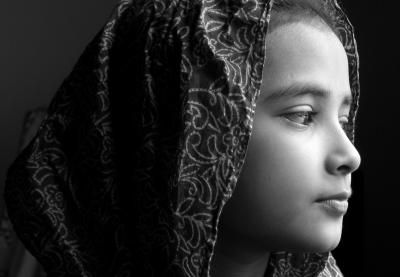Editor’s note: Because many students with marginalized identities find their bullying or harassment go unreported or unrepresented, we know we are not seeing every incident of hate and bias in U.S. schools. So we’re asking for your help. If you know of a school-based incident of hate or bias, please let us know at hateinschools@splcenter.org.
In January, news outlets reported 64 incidents of hate involving U.S. schools. These incidents took place in 32 different states. And in many cases, they took place online, as social media posts continue to fan the flames of hateful acts—if they're not what sparked the match.
This marks the highest rate of hate incidents we've seen since October, when Teaching Tolerance found nearly 90 occurrences in schools across the United States.
Here are some of the trends we saw among the hate incidents in January:
- More than two-thirds took place in high schools.
- Nearly half either spread or started via social media.
- More than one-quarter involved use of the n-word.
- Ohio had by far the most reported incidents (seven), including three in Mason, a suburb of Cincinnati.
More disturbing than the number of incidents, however, was an underlying trend: adults behaving hatefully. Even taking a number of parents out of the equation, educators and school personnel—tasked with protecting students—served instead as the perpetrators of nearly one-quarter of January's hate incidents.
The situations perpetrated by school personnel underscored two important points: 1) many students are subject to both subtle and extreme marginalization at the hands of educators; and 2) it's not just the kids revealing their worst selves on social media.
Of those three occurrences just outside of Cincinnati, two involved educators. A middle school teacher told a 13-year-old black boy that if he didn't turn in his tardy work, his classmates would "become a mob who will want to lynch you." A white high school teacher less than a mile away called a black girl to the front of the class, asking to touch her hair. Elsewhere in Ohio, a student corrected a teacher who mispronounced her name. His reply, he claims jokingly: "Go back to your country."
In DeKalb County, Georgia, a teacher stands accused of enacting abuse and directing anti-Semitic remarks toward Jewish students. The abuse includes deliberately tripping a girl and holding a small boy down to yell in his face with a megaphone.
In Ventura County, California, a Muslim boy felt bullied out of his class by his own teacher, who used materials expressly designed to demonize those who follow Islam. The student remains left to study alone in the library during that class period until his court case resolves.
In St. Louis, a Board of Education candidate and former teacher has a history of prejudiced social media musings, such as "Dreamers is just Anchor Kid misspelled" and "Ban Islam in America!" In McKinney, Texas, two teachers have stepped down after tweeting—separately—that Islam is a "Satanic death cult" and that transgender people are "mentally ill." A principal in Rhode Island has retired in the wake of video showing him referring to Jewish people and black people with slurs. And in Commerce City, Colorado, a principal has been accused of harassing and targeting a teacher due to her Apache heritage.
We could list more. Adults in the community have been engaging in hateful behavior too. Take, for example, Storm Lake, Iowa, where high school basketball fans shook their car keys at a team comprised mostly of youth of color, chanting, "Lock up your cars."
These are just snapshots of a bigger picture: Too many educators, coaches and adults in our schools do not see all students as full human beings worthy of equitable treatment. It's sad enough to witness how this failure translates into social media posts and abuses of power. But it's even more unfortunate to realize how much of this prejudice remains unreported. The effects of this attitude on teaching practices, school climate and district policies may be quieter, but it's equally detrimental to our nation's students.
And while targeted students are left wondering from whom they can expect fairness and respect, other students continue to mimic bad behavior modeled by adults. For example, on Martin Luther King Jr. Day, students in Hurricane, Utah, shared an image of a student in a noose, captioned, "happy national [n-word] day." In South Carolina, a group of girls celebrated the holiday by donning blackface on Snapchat. A student in Charleston, West Virginia, drew a black person hanging from a tree. In Massachusetts, a student declared, "[B]lack lives don't matter; they should be picking my cotton" and that "any queer, any black person, that's a piece of s—."
We encourage present and future anti-bias educators to tap into their compassion and courage. Courage to speak up. To speak out. To expect more not just of your students, but also your colleagues and fellow community members.
For our part, Teaching Tolerance will continue tracking hate incidents at schools on a monthly basis, and we will continue our work to help schools counter hate and bias every day.
Collins is the senior writer for Teaching Tolerance.


0 COMMENTS